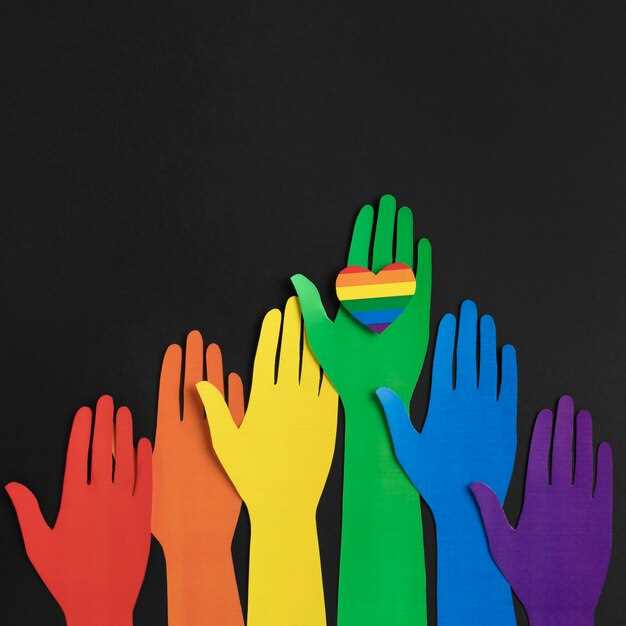
Within the realm of collective organizations, there exists a powerful force that propels society towards a more harmonious and equitable future. By embracing the uniqueness and individuality of every person, we can create a world that celebrates the rich tapestry of human existence. Through the cultivation of inclusive environments, associations play a pivotal role in promoting equal opportunities and ensuring accessibility for all.
At the heart of this movement lies the recognition that diversity extends far beyond the surface level. It encompasses a vast array of perspectives, experiences, and identities that shape the fabric of our communities. By valuing and respecting these differences, we can harness the power of collaboration and foster an environment where every voice is heard and every contribution is valued.
Through the establishment of strong networks and partnerships, associations serve as catalysts for change. They provide a platform for individuals from all walks of life to come together, share their stories, and advocate for a more inclusive society. By amplifying marginalized voices and championing the rights of underrepresented groups, these organizations pave the way for a future where every individual has equal access to opportunities and resources.
Furthermore, the promotion of equity and accessibility goes beyond mere rhetoric. It requires a commitment to dismantling systemic barriers and addressing the root causes of inequality. Associations have the power to drive meaningful change by advocating for policies that promote diversity and inclusion, by providing resources and support to marginalized communities, and by fostering a culture of empathy and understanding.
As we navigate the complexities of a rapidly changing world, it is crucial that we recognize the immense value of diversity and inclusion. By harnessing the collective power of associations, we can create a society that celebrates the uniqueness of every individual, promotes equity and access for all, and paves the way for a brighter and more inclusive future.
Embracing Differences: The Power of Diversity in Associations
In today’s interconnected world, associations have the unique opportunity to harness the power of diversity to drive innovation, foster inclusivity, and create a more equitable society. Embracing differences within associations not only enhances the overall experience for members but also strengthens the organization’s ability to address complex challenges and adapt to a rapidly changing landscape.
Fostering Innovation through Diverse Perspectives
When associations embrace diversity, they open the door to a wealth of perspectives, experiences, and ideas. By bringing together individuals from different backgrounds, cultures, and disciplines, associations can tap into a diverse pool of knowledge and expertise. This diversity of thought fuels innovation, as it encourages the exploration of new ideas, approaches, and solutions. By embracing differences, associations can push the boundaries of what is possible and drive positive change within their respective industries.
Promoting Inclusivity and Equity
Embracing diversity goes hand in hand with promoting inclusivity and equity within associations. By creating an environment that values and respects individuals from all walks of life, associations can foster a sense of belonging and ensure that everyone has an equal opportunity to contribute and thrive. This inclusivity extends beyond just representation; it involves actively seeking out and amplifying diverse voices, perspectives, and experiences. By promoting equity and access, associations can break down barriers and create a more inclusive and equitable society for all.
| Benefits of Embracing Diversity in Associations |
|---|
| Enhanced innovation and problem-solving capabilities |
| Increased creativity and adaptability |
| Improved decision-making processes |
| Expanded networks and opportunities for collaboration |
| Greater cultural competence and understanding |
In conclusion, embracing differences within associations is not only a moral imperative but also a strategic advantage. By harnessing the power of diversity, associations can drive innovation, promote inclusivity and equity, and ultimately create a more vibrant and resilient community. It is through embracing our differences that we can truly unlock the full potential of associations and make a positive impact on the world.
Breaking Barriers: How Associations Foster Inclusion and Access
In this section, we explore the pivotal role that associations play in dismantling barriers and promoting inclusivity and accessibility. By fostering a culture of acceptance and providing opportunities for all individuals, associations contribute to a more equitable society.
Creating a Welcoming Environment
Associations serve as catalysts for change by creating a welcoming environment that embraces individuals from diverse backgrounds. Through their programs, events, and initiatives, associations foster a sense of belonging and encourage participation from all members of society. By promoting inclusivity, associations break down barriers that prevent certain groups from accessing resources and opportunities.
Providing Equal Access to Resources

Associations strive to provide equal access to resources for individuals of all backgrounds. By offering scholarships, grants, and mentorship programs, associations ensure that financial limitations do not hinder individuals from pursuing their goals. Additionally, associations work towards eliminating systemic barriers by advocating for policies that promote equal opportunities and access to education, employment, and healthcare.
Through their commitment to inclusivity and accessibility, associations empower individuals to overcome obstacles and reach their full potential. By breaking down barriers, associations contribute to a more equitable and inclusive society, where everyone has the opportunity to thrive.
Creating a Culture of Equity: Associations’ Role in Promoting Fairness

In today’s society, it is crucial to foster a culture of equity where fairness and equal opportunities are valued and promoted. Associations play a vital role in shaping this culture by advocating for inclusivity, addressing systemic barriers, and ensuring that everyone has access to the same opportunities.
Advocating for Inclusivity
Associations have the power to influence policies and practices that promote inclusivity. By actively advocating for diverse representation and equal participation, associations can help create a society where every individual feels valued and included. This involves challenging discriminatory practices, promoting diversity in leadership positions, and fostering an environment that celebrates the unique perspectives and contributions of all individuals.
Addressing Systemic Barriers
Associations have a responsibility to identify and address systemic barriers that hinder equity and fairness. This includes recognizing and challenging biases, stereotypes, and prejudices that exist within society. Associations can work towards dismantling these barriers by providing education and training programs, promoting awareness campaigns, and collaborating with other organizations to create a more inclusive and equitable society.
- Developing educational programs to raise awareness about unconscious biases and their impact on equity
- Collaborating with other organizations to create initiatives that address systemic barriers
- Supporting research and data collection to identify areas where equity is lacking
- Advocating for policies that promote fairness and equal opportunities
By actively addressing systemic barriers, associations can help create a society where everyone has an equal chance to succeed, regardless of their background or identity.
In conclusion, associations have a crucial role in creating a culture of equity by advocating for inclusivity and addressing systemic barriers. By promoting fairness and equal opportunities, associations can contribute to a more inclusive and equitable society where every individual is valued and has the chance to thrive.
Empowering Marginalized Voices: Associations as Platforms for Advocacy
In a world that values inclusivity and equal opportunities, it is crucial to recognize and amplify the voices of marginalized individuals and communities. Associations play a pivotal role in providing a platform for advocacy, enabling these voices to be heard and empowering marginalized groups to effect meaningful change.
Associations serve as powerful vehicles for advocacy, offering a collective voice to those who have historically been silenced or overlooked. By bringing together individuals with shared experiences and concerns, associations create a sense of unity and strength, allowing marginalized voices to be amplified and their issues to be addressed.
Through advocacy, associations strive to challenge systemic barriers and promote social justice. They work towards dismantling discriminatory practices and policies, advocating for equitable access to resources, opportunities, and services. By leveraging their collective influence, associations can drive policy changes and shape public opinion, ensuring that the needs and rights of marginalized communities are recognized and addressed.
Associations also provide a platform for education and awareness, fostering understanding and empathy among their members and the wider community. By organizing workshops, conferences, and awareness campaigns, associations can promote dialogue and knowledge-sharing, encouraging individuals to become allies and advocates for marginalized groups.
Furthermore, associations can offer support and resources to empower marginalized individuals and communities. By providing mentorship programs, scholarships, and networking opportunities, associations can help bridge the gap between marginalized groups and mainstream society, enabling them to access the same opportunities and resources as their privileged counterparts.
Empowering marginalized voices through associations is not only a matter of social justice but also a means to create a more inclusive and equitable society. By recognizing and valuing the perspectives and experiences of marginalized individuals, associations can drive positive change and contribute to a more diverse and vibrant community.
Building Bridges: Collaborative Efforts to Foster Inclusivity and Embrace Differences
In today’s interconnected world, it is crucial to recognize the importance of building bridges and fostering collaborative efforts to promote diversity and inclusion. By embracing differences and creating an inclusive environment, we can ensure that everyone has equal opportunities to thrive and contribute to society.
Collaboration plays a vital role in promoting diversity and inclusion. It involves bringing together individuals, organizations, and communities from various backgrounds and perspectives to work towards a common goal. Through collaboration, we can pool our resources, knowledge, and experiences to create innovative solutions and initiatives that address the challenges faced by marginalized groups.
One effective way to build bridges and foster collaboration is through the establishment of partnerships and alliances. By forming strategic partnerships with like-minded organizations and associations, we can leverage each other’s strengths and expertise to amplify our impact. These partnerships can involve sharing resources, conducting joint research projects, or organizing joint events and initiatives that promote diversity and inclusion.
Another important aspect of building bridges is creating platforms for dialogue and exchange. By facilitating open and honest conversations, we can bridge the gaps between different communities and foster understanding and empathy. This can be achieved through organizing conferences, workshops, and seminars where individuals from diverse backgrounds can come together to share their experiences, challenges, and ideas.
Furthermore, building bridges requires a commitment to continuous learning and growth. It is essential to educate ourselves and others about the importance of diversity and inclusion, as well as the barriers that prevent equal access and opportunities. By staying informed and actively seeking out opportunities for personal and professional development, we can become better advocates for diversity and inclusion in our respective fields.
| Key Points |
|---|
| Collaboration is crucial in promoting diversity and inclusion. |
| Partnerships and alliances amplify the impact of diversity and inclusion initiatives. |
| Creating platforms for dialogue and exchange fosters understanding and empathy. |
| Continuous learning and growth are essential for building bridges. |
Ensuring Equal Opportunities: Associations’ Strategies for Accessible Engagement
In today’s society, it is crucial for associations to prioritize equal opportunities and accessible engagement. By implementing effective strategies, associations can create an inclusive environment that allows individuals from diverse backgrounds to fully participate and contribute.
One key strategy is to foster a culture of inclusivity within the association. This involves promoting open dialogue, actively listening to different perspectives, and valuing the contributions of all members. By creating a safe and welcoming space, associations can ensure that everyone feels comfortable and empowered to engage.
Another important aspect is providing accessible resources and support. Associations can offer various tools and materials in different formats, such as braille, large print, or audio, to accommodate individuals with visual impairments. Additionally, providing captioning or sign language interpretation for events and meetings can enhance accessibility for individuals with hearing impairments.
Associations can also prioritize digital accessibility by ensuring that their websites and online platforms are designed to be user-friendly for individuals with disabilities. This includes using accessible fonts, colors, and layouts, as well as providing alternative text for images and captions for videos. By making these adjustments, associations can ensure that their digital content is accessible to all members.
Furthermore, associations can actively seek out and engage with underrepresented groups. This can be done through targeted outreach efforts, partnerships with diverse organizations, and the creation of mentorship or leadership development programs. By actively promoting diversity and inclusion, associations can provide equal opportunities for individuals who may have historically been marginalized or excluded.
| Benefits of Associations’ Strategies for Accessible Engagement |
|---|
| 1. Enhanced diversity and representation within the association |
| 2. Increased participation and engagement from members |
| 3. Improved decision-making through diverse perspectives |
| 4. Strengthened sense of community and belonging |
| 5. Expanded opportunities for personal and professional growth |
In conclusion, associations play a crucial role in ensuring equal opportunities and accessible engagement for all individuals. By implementing strategies that foster inclusivity, provide accessible resources, prioritize digital accessibility, and actively engage with underrepresented groups, associations can create a more diverse and equitable environment. These efforts not only benefit the association itself but also contribute to a more inclusive society as a whole.